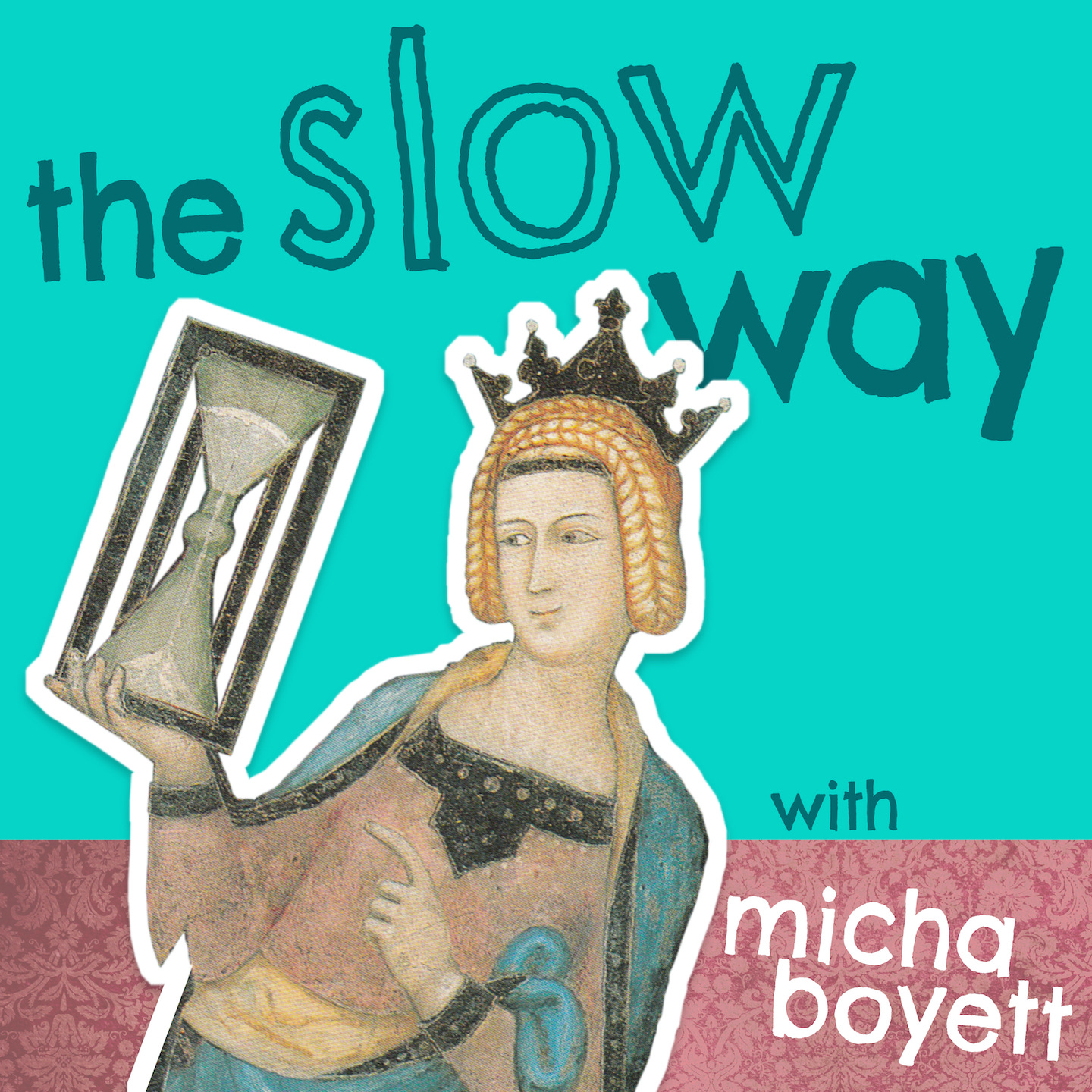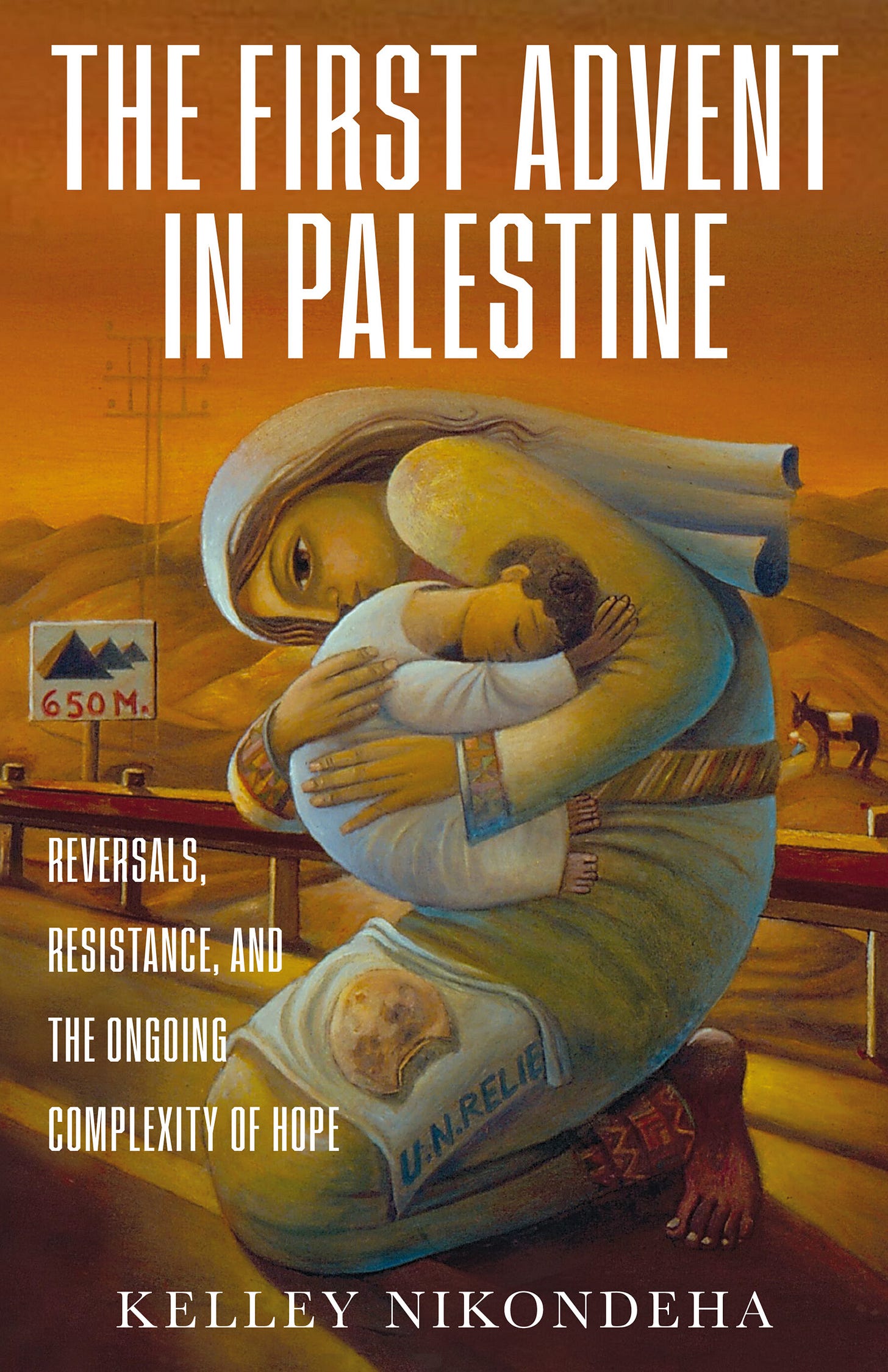Practicing the Way of Mary – An Advent of Believing in Believing, Part 2
The way of Mary is believing that the story of Love in the world is still offering dignity to the suffering, the misunderstood, and the shamed.
Sometimes when I imagine Mary, Mother of God, I imagine a melancholic, moody girl. A girl with power in her soul. A girl whose Yes to the ridiculous idea of God making a home in her was far more than a sweet, natural obedience—or fear of the divine. Her response was considered; she was capable of saying no. After a couple of decades of working with teenagers (most scholars assume Mary to have been between 12 and 18 years old), I know what a girl with power looks like, and what a girl already crushed by the world looks like. Mary was a fighter.
It’s strange to me that she is often depicted all sweet and unbothered by the whole thing. The one word we’re given in Luke 1 about her experience of the visit of an angel is “troubled.” Her life is turned upside down, she runs away from her own parents, is rejected by her betrothed. This is not a story of gentle acceptance, glowing ease. Her yes to the Spirit of God costs her everything.
And how does she react to this news? She writes a poem. And it’s not a poem about rainbows. It’s a poem about God’s good justice flowing through the world. She quotes Hebrew scripture. She insists that the story of God’s work in the world is one of lifting up the oppressed, meeting the desperate and basic needs of the ones in poverty. The song she sings in the first chapter of Luke is not some gentle worship chorus; it’s an act of resistance.
In her powerful book, The First Advent in Palestine: Reversals, Resistance, and the Ongoing Complexity of Hope, Kelley Nikondeha imagines Mary’s world of poverty under the oppressive hand of the Roman occupying force in Palestine, and how Mary’s courage to defy that tyrannical power is as much a part of the story of Christmas as any angelic song. “From deep pain would come impossible goodness for the world,” Nikondeha says. In her poem, Mary insists that God’s peace would be unfurled “where life wasn’t working, where people hurt most, where hope was on the run. Here, God declared, here, peace can — here peace will — bloom.”
Mary sings that God’s justice moves us toward liberation for the ones who are discarded by society, allowing a girl like her, pregnant outside of marriage, to overcome the shame and humiliation her culture placed on her, to reverse the rules of who gets discarded, and who gets to matter. I am certain that Jesus’s courageous and wise young mother taught him the power of a God who brings hope to the least of these, that it was her teaching that led him to the heart of the good news he came bringing, the blessings he would one day teach in the Sermon on the Mount. The Beatitudes were formed as his own body was forming: The poor and the meek, the grieving — those rejected by culture — are the ones blessed by God. Mary, the teenage mother pregnant out of wedlock, is the mother of the one who shows us an entirely new way to live with the world.
As Nikonheha explains, Mary sings not only of her own blessing, rising above her own humiliation, but also of the deliverance of her people. In her song the proud are bewildered and the strong dethroned, while the humble like herself are elevated into powerful positions. Mary seeks a new kind of justice—restoration—and Jesus would follow her path, learning from his mother that when God brings rightness and justice, the hungry are filled with good things.
Blessed are those who are hungry for rightness and justice, we hear Jesus later preach from the hill to the crowds. Rightness and justice are the backbone of the story he was born into. A mother who was humiliated, and still given a voice among the matriarchs of her faith. A woman who celebrates the lofty ones being brought down and the God of Israel ushering in a new way of liberation, one that comes through peace, the undoing of the suffering of her people under the thumbs of Roman occupation. And she does it through song, with a spirit of restoration.
“Blessed is she who has believed that the Lord would fulfill his promises to her!” Mary’s cousin Elizabeth declares when Mary arrives at her door, pregnant, humiliated, alone. It’s Elizabeth’s influence that leads Mary to the song of liberation that follows her cousin’s declaration.
The way of Mary is the way of believing: recognizing that peace is being unfurled through God’s long arm of justice, that those who are most oppressed are the ones most seen by the Holy One. That the story of Love in the world is still offering dignity to the suffering, the misunderstood, the shamed. That our invitation in Advent is to hunger and thirst for rightness and goodness in the world.
The story of Mary can’t help but highlight the current suffering and violence in modern Palestine. Believing the Christmas story requires believing that those living under violence and oppression will be restored, and we can be part of that miracle here and now.
A Slow Practice
Throughout this Advent season, I’m encouraging us to practice a five-minute centering prayer every night before bed or every early morning.
This week as you sit for prayer, light a candle, and focus your attention on a word that speaks to Mary’s experience of power, liberation, and belief in the God who fulfills promises. Imagine holding that word in your heart in the presence of the Spirit of God. When we practice centering prayer, we sit in silence, focus on breathing deeply, and whenever our mind wanders we bring it back with gentleness to the word we’ve chosen.
Set a timer on your phone or on a more old-school timer (if you don’t want the distraction of a phone close by) for five minutes. And begin.
Breathe in: Welcome Holy One.
Breath out: Bring goodness to the world.
Breath in: Welcome Restorer of Broken Places.
Breathe out: Unfurl your peace.
Breathe in: Welcome God With Us.
Breathe out: Increase our belief.
When you’re ready to settle into your time of contemplation, use your imagination to hold your word in the center of you. Breathe deeply in the presence of God, and return to the word whenever you feel your mind drift.
When your timer goes off, you can close with this prayer that comes from Kelly Nikondeha’s words:
Where life isn’t working, where people hurt most, where hope is on the run, Lord of Restoration, may you declare peace.
A Note:
I can’t recommend Kelley Nikondeha’s book enough. It’s a beautiful companion to the Advent season. Find it here.




My spiritual director opened our session today with the poem “Her legs” by Nicola Lee. It’s inspired by the walking Madonna in England, and the image is of Mary striding confidently into the unknown instead of the demure way she is often portrayed in art. And it just feels fitting to have heard that piece prior to reading this post.